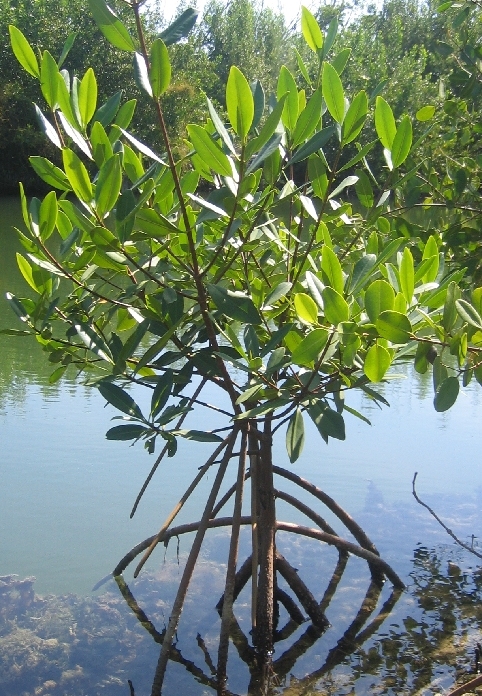WHY IS A MANGROVE IMPORTANT?
The term “mangrove” refers to an assemblage of tropical trees and shrubs that grow in the intertidal zone. These zones are frequently inundated with salt water due to tidal activity of gulfs, seas and oceans. The term also refers to the mangrove family of plants, Rhizophoraceae, or more generally to mangrove trees of the genus Rhizophora. The relationship between mangroves and their associated marine life cannot be overemphasized. The mangroves and coral reefs are linked together not only in the ways they protect each other but also by the animals that move between the two habitats. Mangroves play a key role in near shore habitats of the tropical zone. They:
- ACT AS A FILTERING SYSTEM for the run-off and ground waters, clarifying adjacent open water, which facilitates photosynthesis in marine plants. Mangroves also help to control other forms of pollution, including excess amounts of nitrogen and phosphorous, petroleum products, and halogenated compounds. Mangroves stop these contaminants from polluting the ocean waters through a process called rhizofiltration.
- PROTECT COASTAL LAND, by absorbing the energy of storm-driven wave and wind action - creating in effect a natural breakwater that helps stop erosion, preventing a great deal of property damage and sometimes even human death.
- TRAP DEBRIS AND SILT, contributing to soil formation and stabilizing the coastline.
- SERVE AS HABITAT, their intricate root systems provide shelter for many marine and terrestrial animals, protecting them from ocean currents and strong winds. Many threatened or endangered species reside inside
- PRODUCE NUTRIENTS, a large amount of the leaf litter is shed, being dropped and then broken down by bacteria and fungi which is made available to the food chain of aquatic animals. Therefore mangroves contribute to productivity in off shore water.
- SERVE AS NURSERY AND REFUGE for many juvenile fish and invertebrates such as spiny lobster, gray snapper, jacks and barracuda. Mangroves are the nesting grounds for many water birds such as the great white heron, reddish egrets, roseate white-crowned pigeons and frigate birds.
- ARE IMPORTANT IN TERMS OF AESTHETICS AND TOURISM
Learn more about the fauna and the flora of the mangrove.
And here are some great links to specific studies and general information on mangroves and mangrove ecosystems.
- Reef Relief- Mangroves
- Bob Riley's Mangrove Wrack Protection Homepage
- Growth Performance of Mangrove Seedlings
- Scientific Classification/General Information
- Economic Analyst of Mangrove Management
- List of Mangrove Related Pages
- Status and Trends in Mangrove Area Extend Worldwide

Copyright ©1994-2007, by Reef Ball Foundation, Inc. all rights reserved. See brochure footer for information on patents, copyrights, trademarks and service marks referenced, but not indicated, on this page.
